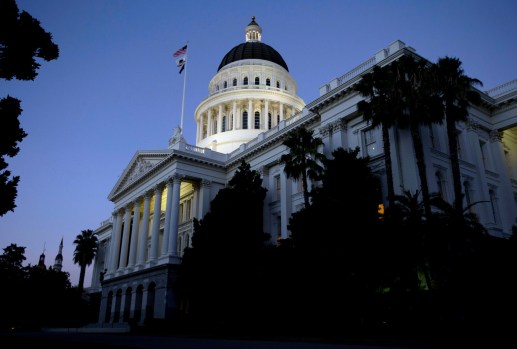
Car crashes people in Los Angeles than homicides in 2023, with the city surpassing more than 300 traffic-related deaths last year. The culprit behind these record traffic fatalities is all too familiar: human drivers. But just as autonomous vehicles begin to offer an alternative to the deadly status quo created by drivers, opponents of the new technology are campaigning to smear AVs’ safety record.
In Los Angeles, the Teamsters have , , and held all focused on sharing the message that AVs are “reckless” and “destructive.” Missing from the scaremongering is any data to back up the Teamsters’ safety claims.
Over the past year, a wave of research has come out allowing for the comparative analyses of AVs and human drivers. has found that AVs cut down substantially on both bodily injury and property damage compared with human drivers. In a of robotaxis and human drivers, another report found that AVs in San Francisco reduced crashes with an injury or damage by an estimated 71 percent over human rideshare operators. And comparing AVs in San Francisco, Phoenix, and LA to human drivers in those cities, the same study found that AVs reduced crashes by 85 percent.
Those are life-saving numbers. In fact, if autonomous vehicles represented just 13 percent of the cars on the road in California, finds that AVs would have saved an estimated 1,300 lives over the last three years and prevented up to 5,000 serious injuries.
How AVs outperform human drivers on safety isn’t a big secret. AVs don’t drink and drive, whereas LA sees drunk driving fatalities in a single year. AVs don’t drive distracted, while distracted drivers in California cause fatalities annually. And AVs don’t speed, whereas speeders killed statewide in 2021.
Importantly, AVs also become better every year. With more data and more driving time, AVs are improving how they keep passengers, pedestrians, and everyone on the road safe. Traffic fatalities from human drivers, on the other hand, have remained stubbornly high, .
Despite the facts, the Teamsters have launched a so-called “” campaign against AV technologies. To stop AVs in their tracks, the union has legislation (SB 915) that would allow local municipalities to ban AVs, effectively quashing AV deployment statewide by creating a patchwork of laws that restrict their travel between towns and cities.
While a mass of research on AV and human driver safety contradicts the Teamsters’ safety rhetoric, the union has another argument they’ve deployed against AVs – a fear that AVs will lead to lost jobs.
These claims deserve more scrutiny.
That’s why my organization, Chamber of Progress, just finding that AVs are poised to create 114,000 jobs over the next 15 years in production, distribution, maintenance, upgrades, and repairs. Better yet, an estimated 82 percent of AV workers will make more than the median wage. Compare that to rideshare drivers, who below the .
have found that autonomous trucks would increase the number of U.S. jobs by as many as 35,000. Another by the National Disability Institute reveals that if reliable, affordable AVs were widely available, around 4.4 million direct jobs would open up for Americans with a disability.
And the benefits that AVs bring to the disabled community go beyond job access. argues that the autonomy AVs offer blind and low-vision people will be life-changing. AVs would also ease the transportation burdens minority communities face by making it easier, safer, and cheaper to get around.
Unions are an important part of our society that have created critical workers’ rights for everyone. They can and should advocate for job protections. But the Teamsters’ claims about the safety of AVs are false, and the reality behind AVs and jobs is more complex than the Teamsters admit.
We should look for ways to improve opportunities for workers. But those opportunities shouldn’t come at the expense of public safety and equity solutions, or the new job opportunities AVs will bring. While AVs might cut into the Teamsters’ hold on California’s transportation sector, that’s a poor reason for stalling a life-saving innovation that will prevent traffic fatalities.
As roadway deaths outpace gun violence in LA, we need to be honest about the reality of the traffic safety crisis we are facing: the status quo created by deadly human drivers is broken. For a decade, California cities have failed to make headway achieving their Vision Zero goals to reduce traffic fatalities. It’s time for policymakers to side with the safety data and allow for the rollout of safe AVs in California.
Adam Kovacevich is the founder and CEO of Chamber of Progress. Adam has worked at the intersection of tech and politics for 20 years, leading public policy at Google and Lime.




